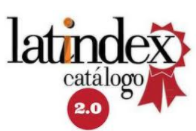Las emisiones de gases efecto invernadero de buques: la Organización Marítima Internacional ante el cambio climático y el balance con el comercio internacional
DOI:
https://doi.org/10.35305/cc.vi136.149Keywords:
cambio climático, transporte marítimo, Organización Marítima Internacional, gases efecto invernaderoAbstract
Aiming to contribute to the global goals on climate change, the International Maritime Organization (IMO) undertook the challenge of regulating the emission of greenhouse gases (GHG) from ships. Maritime transport contributes less than 3% to global GHG generation, but transports more than 90% of world trade. This requires adopting measures that contribute to the reduction of GHG while avoiding or limiting their negative impacts on international trade, particularly on developing countries. The IMO will need to decide how to apply the 'common but differentiated responsibilities' principle to the reduction of GHG emissions from ships, as most developing countries are importers or exporters to or from distant markets, and the measures could entail increases in freight prices. It is necessary to face the challenge with realism and solidarity, since - in the long term - it will require the development of alternative fuels and their production on a scale that meets future world demand, in the construction of new fleets, with new technology and, not less important, the development of new port infrastructure at a global level
Downloads
Published
How to Cite
Issue
Section
License
Copyright (c) 2022 Autor

This work is licensed under a Creative Commons Attribution-NonCommercial-ShareAlike 4.0 International License.
Aquellos autores/as que tengan publicaciones con esta revista, aceptan los términos siguientes:
- Los autores/as conservarán sus derechos de autor y garantizarán a la revista el derecho de primera publicación de su obra, el cuál estará simultáneamente sujeto a la Licencia Creative Commons Reconocimiento-NoComercial-CompartirIgual 4.0.
- Los autores/as podrán adoptar otros acuerdos de licencia no exclusiva de distribución de la versión de la obra publicada (p. ej.: depositarla en un archivo telemático institucional o publicarla en un volumen monográfico) siempre que se indique la publicación inicial en esta revista.
- Se permite y recomienda a los autores/as difundir su obra a través de Internet (p. ej.: en archivos telemáticos institucionales o en su página web) antes y durante el proceso de envío, lo cual puede producir intercambios interesantes y aumentar las citas de la obra publicada.
















